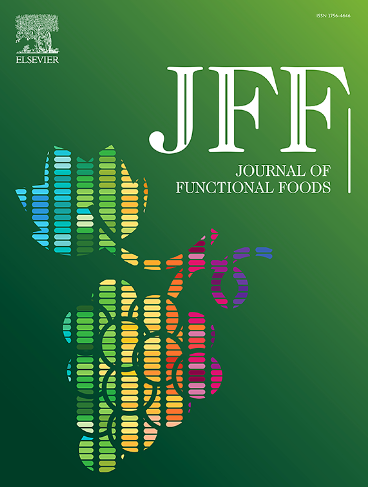基于met/Tlr2/Tlr4介导的PI3K-Akt信号通路阐明青藤果抗ccl4诱导小鼠肝损伤的机制
IF 4
2区 农林科学
Q2 FOOD SCIENCE & TECHNOLOGY
引用次数: 0
摘要
本研究旨在探讨RCH对ccl4致小鼠肝损伤的作用机制。RCH处理能有效抑制ccl4诱导的小鼠肝损伤和凋亡,降低肝酶活性、血液炎症细胞和血清炎症因子水平。网络药理学和机器学习预测PI3K-Akt通路和Met蛋白在RCH抗ccl4诱导的肝损伤中发挥重要作用。qRT-PCR和Western blot结果显示,RCH可下调受体蛋白Met、Tlr2和Tlr4的表达,抑制Pik3ca和Akt1的磷酸化,阻止NF-κB P65的磷酸化,降低cleaved Caspase3的表达。上述结果表明,RCH通过抑制Met/Tlr2/ tlr4介导的PI3K-Akt信号通路,有效减轻ccl4诱导小鼠肝损伤。本文章由计算机程序翻译,如有差异,请以英文原文为准。

Elucidation of the mechanism of the fruit of Rubus chingii Hu against CCl4-induced liver injury in mice based on met/Tlr2/Tlr4 -mediated PI3K-Akt signaling pathway
This study aims to evaluate the mechanism of RCH against CCl4-induced liver injury in mice. RCH treatment effectively inhibited CCl4-induced liver injury and apoptosis in mice, and reduced liver enzyme activities, blood inflammatory cell and serum inflammatory factor levels. Network pharmacology and machine learning predicted that PI3K-Akt pathway and Met proteins play important roles in RCH anti-CCl4-induced liver injury. The results of qRT-PCR and Western blot showed that RCH could down-regulate the expression of the receptor proteins Met, Tlr2, and Tlr4, and inhibit the phosphorylation of Pik3ca and Akt1, and prevent the phosphorylation of NF-κB P65, and decrease cleaved Caspase3 expression. These findings suggest that RCH effectively alleviated liver injury in CCl4-induced mice by inhibiting the Met/Tlr2/Tlr4-mediated PI3K-Akt signaling pathway.
求助全文
通过发布文献求助,成功后即可免费获取论文全文。
去求助
来源期刊

Journal of Functional Foods
FOOD SCIENCE & TECHNOLOGY-
CiteScore
9.60
自引率
1.80%
发文量
428
审稿时长
76 days
期刊介绍:
Journal of Functional Foods continues with the same aims and scope, editorial team, submission system and rigorous peer review. We give authors the possibility to publish their top-quality papers in a well-established leading journal in the food and nutrition fields. The Journal will keep its rigorous criteria to screen high impact research addressing relevant scientific topics and performed by sound methodologies.
The Journal of Functional Foods aims to bring together the results of fundamental and applied research into healthy foods and biologically active food ingredients.
The Journal is centered in the specific area at the boundaries among food technology, nutrition and health welcoming papers having a good interdisciplinary approach. The Journal will cover the fields of plant bioactives; dietary fibre, probiotics; functional lipids; bioactive peptides; vitamins, minerals and botanicals and other dietary supplements. Nutritional and technological aspects related to the development of functional foods and beverages are of core interest to the journal. Experimental works dealing with food digestion, bioavailability of food bioactives and on the mechanisms by which foods and their components are able to modulate physiological parameters connected with disease prevention are of particular interest as well as those dealing with personalized nutrition and nutritional needs in pathological subjects.
 求助内容:
求助内容: 应助结果提醒方式:
应助结果提醒方式:


